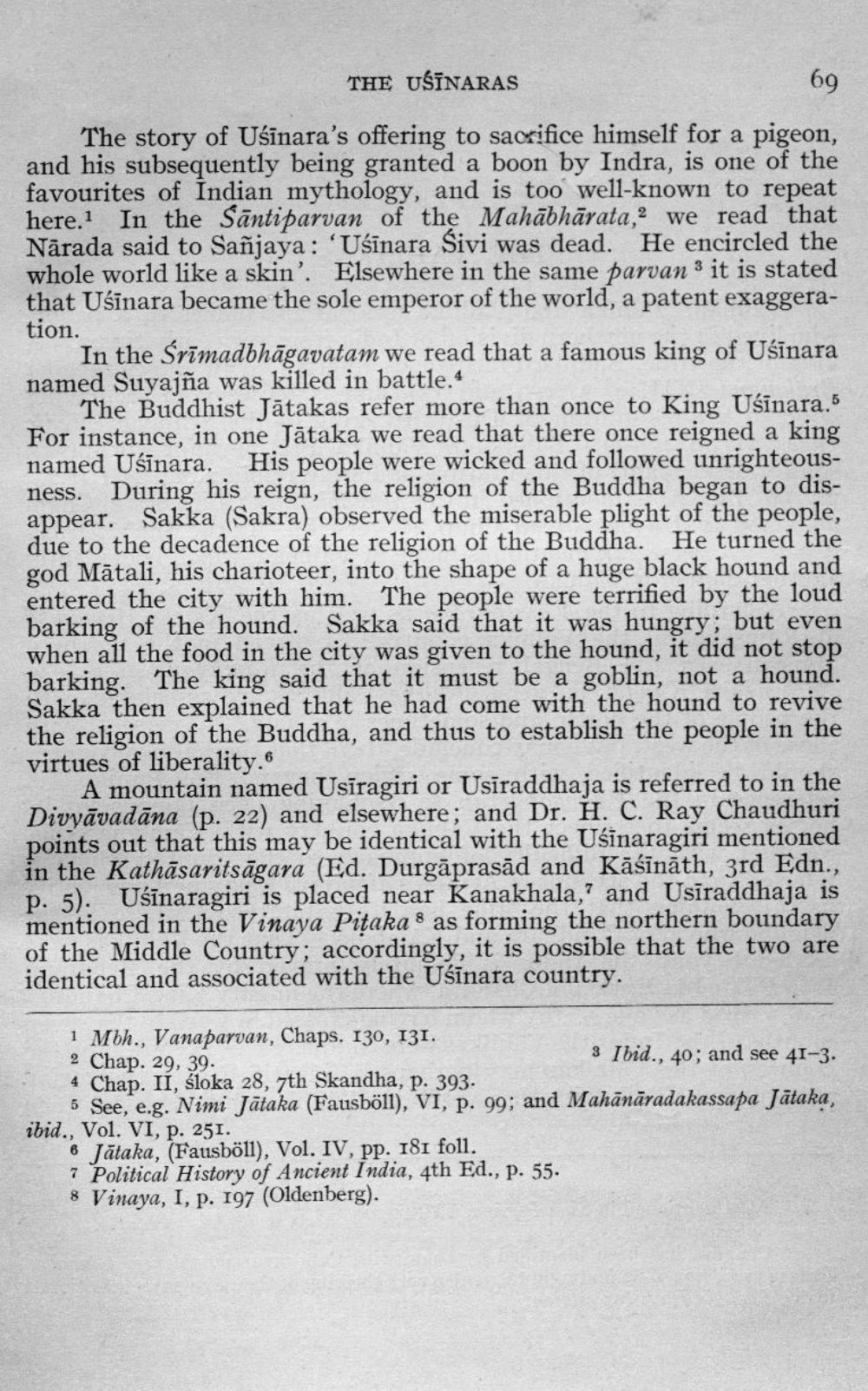________________
THE UŚĪNARAS
69
The story of Uśīnara's offering to sacrifice himself for a pigeon, and his subsequently being granted a boon by Indra, is one of the favourites of Indian mythology, and is too well-known to repeat here. In the Sānti parvan of the Mahābhārata, we read that Nārada said to Sañjaya: 'Uśīnara Sivi was dead. He encircled the whole world like a skin'. Elsewhere in the same parvan 3 it is stated that Uśīnara became the sole emperor of the world, a patent exaggeration.
In the Śrīmadbhāgavatam we read that a famous king of Usinara named Suyajña was killed in battle.4
The Buddhist Jātakas refer more than once to King Uśīnara.5 For instance, in one Jātaka we read that there once reigned a king named Usinara. His people were wicked and followed unrighteousness. During his reign, the religion of the Buddha began to disappear. Sakka (Sakra) observed the miserable plight of the people, due to the decadence of the religion of the Buddha. He turned the god Mātali, his charioteer, into the shape of a huge black hound and entered the city with him. The people were terrified by the loud barking of the hound. Sakka said that it was hungry; but even when all the food in the city was given to the hound, it did not stop barking. The king said that it must be a goblin, not a hound. Sakka then explained that he had come with the hound to revive the religion of the Buddha, and thus to establish the people in the virtues of liberality.
A mountain named Usīragiri or Usīraddhaja is referred to in the Divyāvadāna (p. 22) and elsewhere; and Dr. H. C. Ray Chaudhuri points out that this may be identical with the Usinaragiri mentioned in the Kathāsaritsāgara (Ed. Durgāprasād and Kāšīnāth, 3rd Edn., p. 5). Ušīnaragiri is placed near Kanakhala,7 and Usīraddhaja is mentioned in the Vinaya Pițaka 8 as forming the northern boundary of the Middle Country, accordingly, it is possible that the two are identical and associated with the Uśīnara country.
1 Mbh., Vanaparvan, Chaps. 130, 131. 2 Chap. 29, 39.
3 Ibid., 40; and see 41-3. 4 Chap. II, śloka 28, 7th Skandha, p. 393.
5 See, e.g. Nimi Jātaka (Fausböll), VI, p. 99; and Mahānāradakassapa Jātaka, ibid., Vol. VI, p. 251.
6 Jataka, (Fausböll), Vol. IV, pp. I8I foll. 7 Political History of Ancient India, 4th Ed., p. 55. 8 Vinaya, I, p. 197 (Oldenberg).




